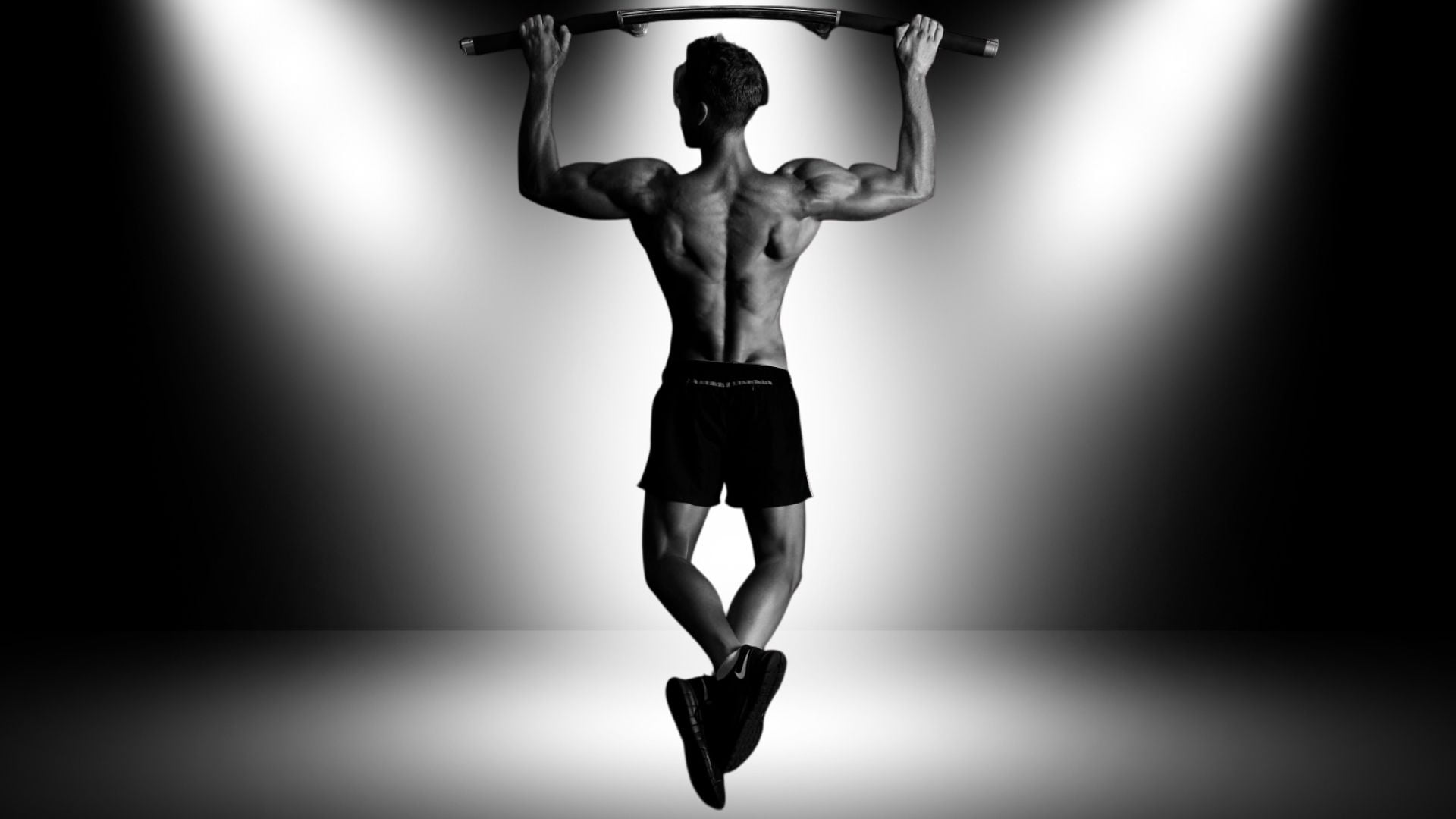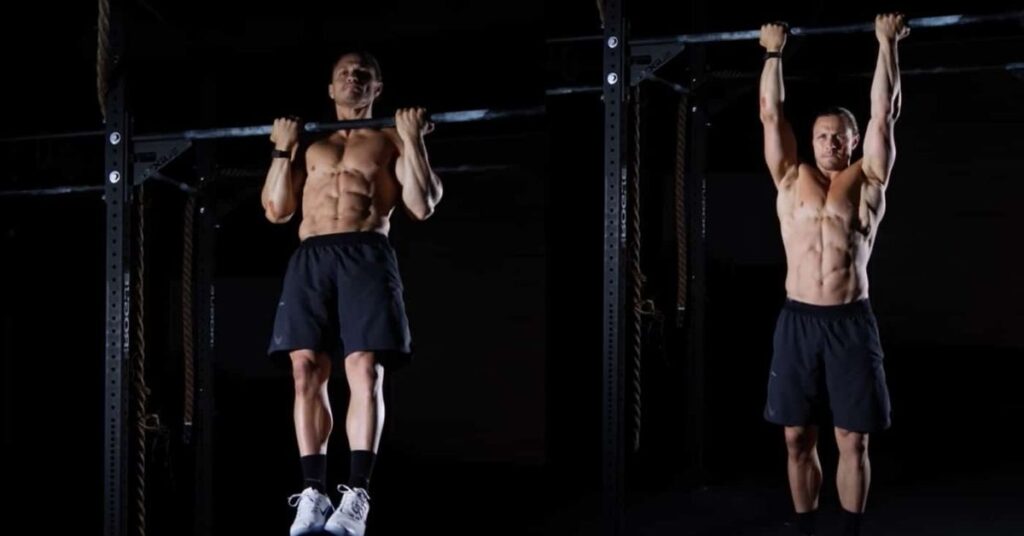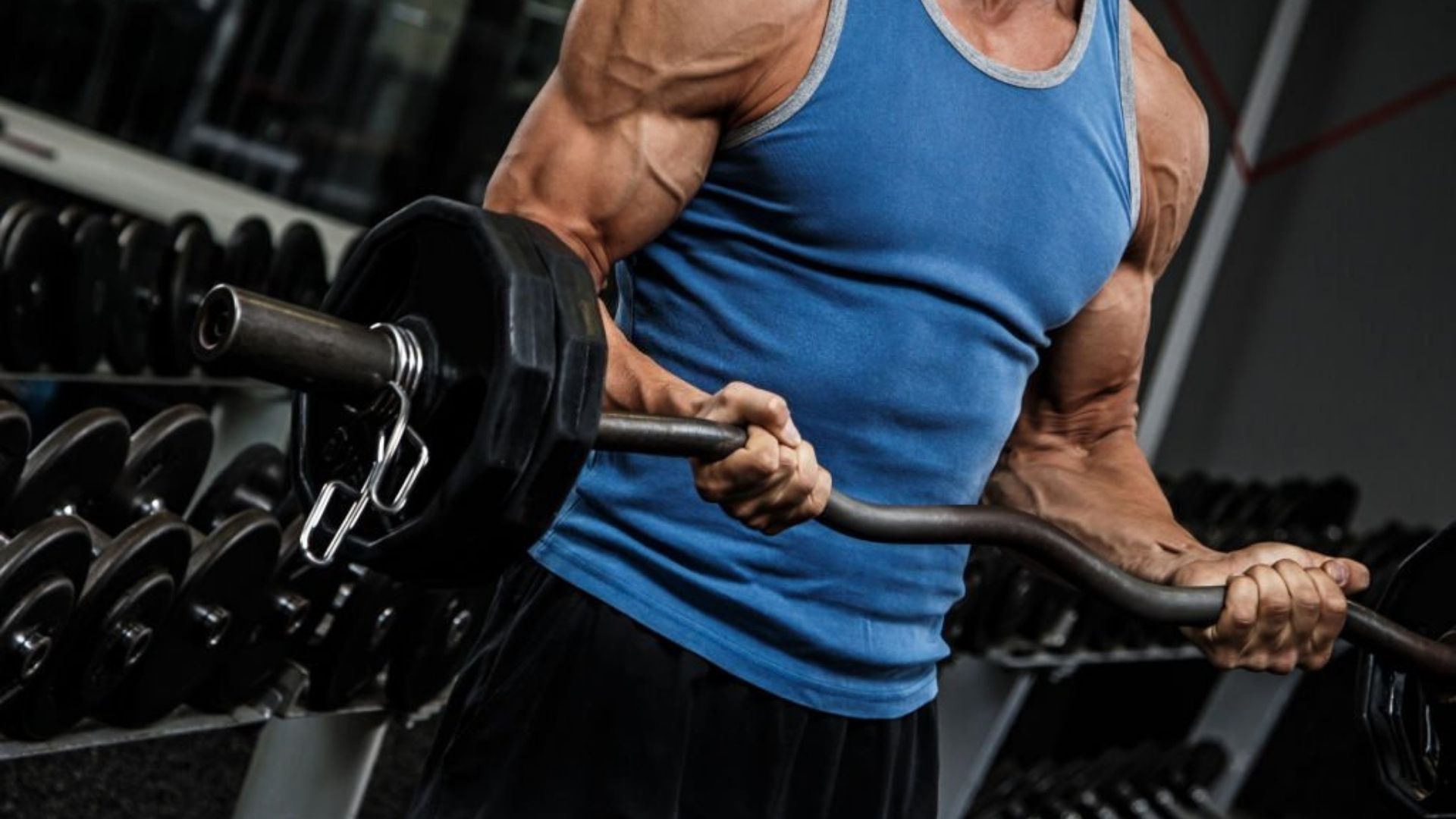
Supinated Pull-Up: Benefits and How to Do It Correctly
Also called the chin-up, the supinated pull-up is among the best exercises to strengthen your back muscles.
This workout is sure to build the strength of your upper body and help you achieve those fitness targets.
We will go over all you should be aware of about the supinated pull-up.
Supinated Pull-Up: Working Muscles

Primary Muscle Groups
The supinated pull-up primarily targets your lats as well as your Biceps.
It is located in the mid-low back beginning in the mid-low back; the muscles of the latissimus Dorsi are the broadest in your back.
Your lats play a major part in many “pulling” exercises, such as the pulldown of your lats, all variations on pull-ups, and various other rowing exercises.
The biceps brachii muscle is the scientific name of the most prominent muscle located in the upper part of your arm.
The bicep muscle consists of 2 “heads:” a long head and a short. Both heads function as a unit in pulling and lifting motions.
Secondary Muscle Groups
One of the advantages of supinated pull-up is that it works on a range of muscles in your lower back, such as the rhomboid teres major and the traps.
This exercise stimulates the brachioradialis muscle in your forearm and your brachialis muscle located beneath your bicep, located in your upper arm.
Finally, chin-ups strengthen the smaller muscles in your shoulders like those in the posterior deltoids.
Your deep core muscles (i.e., the transverse abdominis) are also engaged to strengthen your midsection.
Supinated Pull-Up: Benefits

#1 Stronger & Bigger Biceps And Lats
While the traditional pull-up will work your lats more than the supinated pull-up, the variation with the underhand is still a grueling lat workout.
The supinated pull-up is also a great way to work your biceps more than the typical grip. It also allows you to pull up your hands with a greater force.
A strong back is crucial to improving your performance in sports, other compound exercises, and other everyday activities.
If you want to build larger, stronger muscles for your back and biceps, supinated pull-ups are perfect for you!
#2 Improved Posture
Sitting for long periods on chairs while at work or driving can result in slumping, pain, and strain on your back and shoulders.
The supinated pull-up will help activate the muscles not being used in your upper back. This can aid in reducing back pain and discomfort.
If you keep working out regularly, With regular exercise, you’ll be standing straight and in a good posture in very little time.
#3 Improved Confidence
Supinated pull-ups are one of the most effective exercises for monitoring your progress.
In the beginning, you might not be able to do all chin-ups. But, as you build back the strength of your bicep, you will be able to gradually increase your strength and increase your strength.
This means that you’ll gain confidence when you set and accomplish new goals to pull up for you!
Supinated Pull-Up: Instructions
Equipment
For this workout, it is all you need is the pull-up bar.
Setup
- Take the pull-up bar by placing your hands approximately shoulder-width apart, facing your palms.
- Make sure your back is straight, and your feet are towards your body while hanging off the bars.
Instructions
- Bring your shoulders back and engage your biceps and lats to lift until your chin is raised over the bar.
- Pause briefly at the top of the exercise and press your biceps and lats to the max.
- Slowly return to your beginning position and repeat!
Recommendation
The goal is to complete three to four sets comprising six or more supinated pull-ups.
Once you are confident in the pull-up form, you can modify the rep ranges you perform and set them to push yourself.
Supinated Pull-Up: Mistakes

#1 Completing Partial Reps
The most frequent supinated pull-up error is not completing an entire rep. Some people do not complete the entire lift over the bar.
They don’t want completely drop down in other instances and extend their arms into the beginning position.
These mistakes can derail the potential benefits of your pull-up sets. Be sure to practice your form correctly, and you’ll get the best outcomes!
#2 Swinging Back And Forth
The use of momentum is a common pull-up problem. While moving back and forth can assist you in doing more reps, it means you are relying on your body’s inertia to push up.
In the end, the muscles you’re working on aren’t tested to their highest level.
To avoid swinging, ensure your core is engaged and your feet firmly towards the front. Concentrate on keeping your body straight upwards and downwards on each repetition.
#3 Utilizing Your Arms Too Much
Some weightlifters over-use their arms when they supinate pull up in the lower portion of the movement. While the biceps can play a significant function in the exercise, you don’t want them to take over the exercise and detract from the engagement of the lats.
Make sure to pull up and down in an easy and controlled movement.
Supinated Pull-Up: Variations
#1 Assisted Supinated Pull-Up
If you’re unable to perform, even one pull-up begins with the assisted pull-up machine. Place both knees placed on the pads, and grasp the handles on the inside while your palms face your body.
After that, you can complete the supinated pull-up using the same form and technique as the body weight variation.
Repeat!
#2 Supinated Pull Up Hold
Holding on to the supinated pull-up is a great method to test yourself and focus on the full contraction of your muscles.
Simply stay near the end of each exercise for three minutes. Press your biceps and back with each hold, then return to your starting position.
You might not be able to do as many pull-ups, but you’ll definitely be able to make more time.
#3 Wide Grip Pull Up
The supinated pull-up is more effective for your bicep than regular pull-ups. The wide grip overhand pull-up variant focuses on the muscles of your lats.
To start, grab one of the handles on the pull-up bar and place your hands wider than your shoulder and your palms facing away from you.
And then, finish the pull-up in the same manner you did with the supinated pull-up.
Supinated Pull-Up: Alternatives
If you liked the supinated pull-up, then check out these back exercises that will help improve your upper body strength:
#1 Supinated Lat Pulldown
Place your feet on the bench and in front of the machine. Lengthen your arms to grasp the bar with your palms directed towards you. The hands must be approximately two inches apart.
When you are leaning slightly back and bending your back, move your shoulder blades downwards and forward, and then lower the bar until it is at the top of your ribcage.
Stop briefly near the top, squeeze your lats, and slowly return to your starting position. Keep your core tight, and repeat!
#2 Underhand Barbell Row
Place an upright barbell with a weight that is light to moderate. Make an angle of 45 degrees. Grasp the barbell using your hands a little wider than shoulder-width. Keep your hands facing yours.
Engage your lats and move the barbell toward your belly button on every rep. Make sure you squeeze your lats to the top before slowly returning to your starting position.
Repeat!
#3 Pendlay Row
Make a barbell set up on the ground with a light to medium weight. Make sure that you step forward so that the barbell is above the middle part between your toes.
Make sure you tie your waist at the waist, then bend the knees so that your back is equal to the floor. Hold the bar using an overhand grip using the hands wider than your shoulder distance.
Keep your elbows in a slightly relaxed position, hold your core in place and then engage your lats to drive your elbows upwards and backward while bringing the barbell toward the chest’s bottom.
Make sure you squeeze your lats to the top, stop for a second, and slowly lower the barbell to the floor in the starting position. Make sure you are tight in your core and continue!











